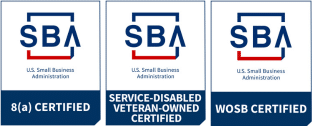Technology is ever evolving, and businesses that take advantage of new tech are reaping the benefits. Virtual reality (VR) poses many unique aspects to online commerce that can take your sales to the next level. The momentum behind VR is constantly growing, and some businesses have already integrated VR into their marketing strategy, and their sales have grown consequentially. We have all seen the commercials by Warby Parker that advertise their virtual try-on feature; this is an example of mixed reality, a subtype of virtual reality. Mixed reality (MR) is precisely what it sounds like, a mix of computer-automated elements with actual reality. IKEA has also launched an MR feature on their website that allows customers to visualize furniture in their own homes! This feature boosted sales because it lessened the amount of design research customers had to do to find the perfect product for their home and eliminated a trip to the store. Virtually every field can benefit from integrating some form of augmented reality into its business model.
Businesses that sell products for wearing have limitless possibilities for using virtual reality in their marketing strategy. Whether you are selling eyeglasses, beauty products, fashion, or even Band-Aids, MR can allow potential customers to see themselves using your product. With the Covid-19 delta variant rapidly spreading, it’s not safe for customers to try products on in stores. Still, with high-quality augmented reality, they can get this experience without compromising safety. The investment in VR can be critical to keeping business booming during the pandemic.
Virtual showrooms are an up-and-coming strategy for many companies which use 100% computer-automated reality to encompass customers into their business. This has extensive applications for those in realty, car sales, and vacations, to name a few. When walking through a physical home isn’t feasible, virtual reality allows potential buyers to walk through the property on their own time! This means more traffic to each house because time is no longer a limiting factor. Buying a car online is becoming more popular, and VR may attract more people to the online car lot. Imagine walking around and looking inside a car without actually having to be at a dealership. With VR, even driving simulations are possible. While the simulation may not be enough to get everyone to purchase online, it increases the chance potential customers will visit a physical dealer to make a purchase. VR allows for a lot of initial ‘weeding out’ of products to be done more conveniently. Carnival Cruises are already making use of this technology by providing a VR Caribbean Cruise experience to get consumers to want to experience the real thing.
VR videos can also be used to teach buyers about your product. There are endless possibilities to engage your audience using VR, from tutorials to ‘try it yourself’ demonstrations. An excellent example of companies using mixed reality to engage customers and teach them about their product is Green Mountain Coffee Roasters’ Brew Over Ice Cold Brew mixed reality demonstration. Customers can scan a QR code on the box and learn how to brew the perfect cup of Green Mountain Cold Brew using a virtual K-cup machine imposed onto their own countertop. The best part is customers only need their smartphones to complete the MR demonstration!
No matter how small your operation, some form of VR can be implemented into your marketing strategy. It can be as simple as taking videos and images and combining them so that your audience can view your product, store, or service from 360º. The infinite options for modernizing your business strategy can be overwhelming, and sometimes it is most productive to call in some outside help. The Miner Agency is a multifaceted marketing and public relations company that can lessen the load on your organization and take it to the next level.

